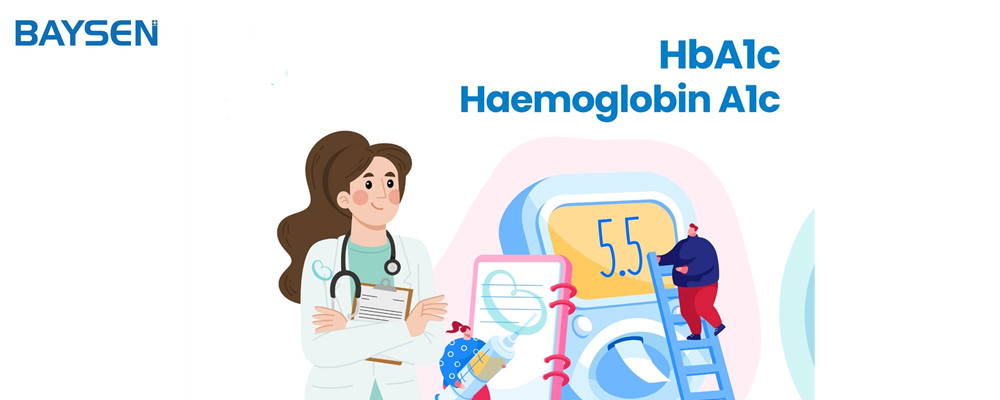Precise Prevention and Moving the Gatekeeper: Why Primary Care Clinics Must Become the Frontline in Blood Glucose Monitoring
In the broader landscape of chronic disease prevention and control, the heavy burden posed by diabetes and its complications has become a significant public health challenge. Facing this “silent epidemic,” shifting prevention and control efforts to primary care clinics is not only inevitable but also crucial to building an efficient medical and health service system. As the gatekeepers of residents’ health, primary care clinics urgently need to establish standardized and systematic blood glucose monitoring, particularly HbA1c testing, as a core service capability. This holds profound implications.
I. First Contact at the Primary Level: Seizing the “Golden Window” for Diabetes Management
Primary care clinics are located throughout communities, close to residents, and offer unparalleled convenience and accessibility. The vast majority of diabetes patients undergo initial screening, daily follow-up, and routine management here. However, traditional blood glucose monitoring relies heavily on fasting and postprandial random blood glucose measurements. While these indicators provide a snapshot of blood glucose levels, they are susceptible to short-term interference from factors such as diet, exercise, mood, and medication. These “snapshots” provide limited insight into long-term blood glucose control.
Many patients with early-stage diabetes or prediabetes may have normal fasting blood sugar levels, but their postprandial blood sugar levels may already be elevated. Testing only fasting blood sugar levels can easily lead to missed diagnoses. If primary care clinics are satisfied with only basic blood sugar testing, they miss the optimal opportunity for early identification and intervention during the “golden window.”
II. HbA1c: The Indispensable “Glycemic Supervisor”
The introduction of glycated hemoglobin (HbA1c) perfectly compensates for the shortcomings of instantaneous blood sugar. It is the product of the combination of hemoglobin and blood sugar in the blood during the life of red blood cells. Its value can stably reflect the average blood sugar level over the past 2-3 months. This characteristic gives it multiple key values:
1. The “gold standard” for assessing long-term glucose control: HbA1c is unaffected by short-term fluctuations, providing doctors with an objective and reliable basis for evaluating the effectiveness of treatment plans. It serves as a “navigator” for adjusting medication, diet, and exercise plans.
2. A key basis for diabetes diagnosis: According to international and domestic guidelines, HbA1c ≥6.7% has become one of the diagnostic criteria for diabetes. Its widespread use in primary care clinics can significantly improve the diagnosis rate of diabetes, especially among those who only present with postprandial hyperglycemia.
3. A “warning device” for predicting complication risks: Numerous studies have confirmed that HbA1c levels are closely associated with the risk of chronic complications such as diabetic microangiopathy (such as retinopathy and nephropathy). Strict HbA1c control can effectively delay and reduce the onset of complications, significantly improving patients’ long-term quality of life and reducing the social medical burden.
III. Empowering grassroots organizations and building a closed loop for diabetes management
Bringing HbA1c testing capabilities down to primary care clinics means residents can get the same accurate assessments as those at large hospitals right at their doorsteps. For primary care clinics themselves, this means:
Enhanced Diagnostic Capability and Service Retention: Possessing comprehensive blood glucose assessment tools strengthens patient trust and reliance on the clinic, transforming it from a simple “prescription dispensary” into a professional “health management center.”
Achieving Refined Patient Management: Through regular tracking of HbA1c, clinics can establish detailed patient health records, enabling comprehensive, closed-loop management from screening and diagnosis to treatment and follow-up.
Implementing a tiered diagnosis and treatment system: Primary care clinics master core monitoring technologies, effectively screening out complex cases that truly require referral to higher-level hospitals, and optimizing the allocation of medical resources.
Conclusion
Blood glucose monitoring should no longer be limited to the mere act of “a drop of blood on your fingertip.” In the battle against diabetes, equipping primary care clinics with and routinely conducting HbA1c testing equips residents’ health gatekeepers with “precise telescopes and reliable alarms.” This is not only necessary to enhance the competitiveness of individual clinics, but also a strategic initiative to build an integrated healthcare service system centered on people’s health and address the challenges of chronic diseases. Promoting the widespread use of HbA1c testing at the grassroots level truly shifts the focus of health management, building a solid first line of defense against diabetes for hundreds of millions of people.
We Baysen Medical is always focus on diagnostic technique to improve the quality of life . We have developed 5 technology platforms- Latex , colloidal gold , Fluorescence Immunochromatographic Assay , Molecular,Chemiluminescence Immunoassay, Our Hba1c test kit are easy operation and can get test result in 15 mins
Post time: Oct-10-2025
